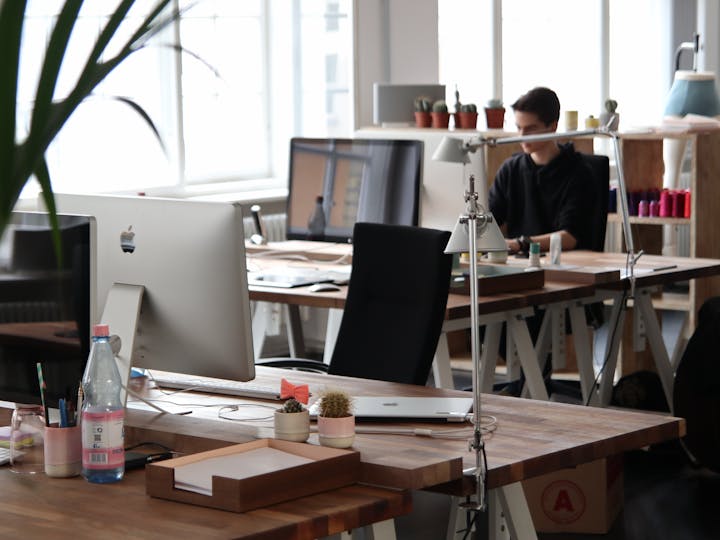A well-designed office is more than a visual asset — it’s a key driver of productivity, wellbeing, and employee satisfaction. As businesses across New Zealand rethink their workspaces post-pandemic, many are recognising the value of optimising office setups, even when working with second-hand or repurposed furniture.
Every design decision, from lighting to layout, can influence mood, focus, and efficiency. Understanding these impacts empowers organisations to make smarter, more cost-effective choices.
The Psychology of Space
Environmental psychology reveals how our surroundings shape our behaviour. Poorly planned workspaces — dark corners, uncomfortable furniture, cluttered layouts — can reduce motivation, increase stress, and hamper productivity. On the other hand, bright, well-ventilated, and thoughtfully arranged environments are known to encourage focus, collaboration, and creativity.
Natural light, for instance, has been linked to improved mood and alertness. Ensuring access to daylight, minimising noise disruptions, and maintaining visual cleanliness all contribute to a more productive and positive atmosphere.
Ergonomics: Protecting Health and Enhancing Focus
Ergonomics, the science of optimising design for human use, plays a critical role in office productivity. Ill-fitting chairs, poor monitor alignment, and static desks can lead to physical discomforts such as repetitive strain injuries and back pain — issues that not only reduce comfort but also result in lost productivity and absenteeism.
Even with budget constraints, businesses can prioritise ergonomics by choosing second-hand furniture that still meets modern standards. Adjustable desks and supportive chairs help staff maintain healthy postures, reducing fatigue and allowing for better focus throughout the day.
Practical Examples for Smarter Setups
Many New Zealand businesses are making strategic improvements to their workspaces using repurposed furniture and modest budgets. These small but effective changes make a real difference to both morale and efficiency:
● Introducing height-adjustable desks to encourage movement and improve posture.
● Adding acoustic panels in open-plan areas to reduce noise and create zones for quiet work.
● Bringing in natural elements, such as indoor plants and wooden surfaces, which foster a calming environment and promote mental clarity.
● Choosing second-hand, quality seating solutions — many companies are sourcing affordable ergonomic office chairs that offer full support and adjustability, enabling staff to work comfortably for extended periods without the cost of new models.
Each example shows that boosting productivity doesn’t have to mean a complete office overhaul — just a smarter use of what’s available.
Layout That Works
Office layout should support both individual and collaborative work. A one-size-fits-all approach often falls short, especially in hybrid or activity-based work environments. Flexible layouts, modular furniture, and dedicated zones for meetings, solo tasks, or breaks can help employees transition smoothly between tasks.
Zoning can significantly improve functionality — think open desks for team collaboration, quiet pods for deep work, and soft seating areas for informal catch-ups. These spaces reduce mental fatigue and help employees stay engaged and productive.
Shared resource placement also matters. Keeping printers, whiteboards, and recycling bins accessible but unobtrusive ensures efficiency without disruption.
The Emotional Impact of Design
Visual elements such as colour, material, and décor influence employee mindset. Warm tones can energise, while cooler hues may help people focus. Incorporating natural textures and biophilic design principles — such as wooden desks, live plants, and nature-inspired art — has been shown to reduce stress and improve overall well-being.
Repurposed furniture can play an important role here. A well-maintained vintage desk or refurbished chair can bring warmth and personality to a space, breaking the sterile look of modern minimalism without sacrificing function.
Sustainable and Values-Driven Choices
Beyond aesthetics and function, second-hand office furniture supports sustainability goals. Reusing quality items reduces landfill waste and supports the circular economy. It also communicates a message of environmental responsibility — a value increasingly appreciated by staff and clients alike.
As more New Zealand organisations focus on both cost-efficiency and environmental impact, sourcing repurposed furniture becomes a strategic decision that aligns with modern business ethics.
A Productive Space on a Budget
Your office setup directly affects how your team feels and performs. By investing in ergonomics, optimising layout, and making environmentally conscious choices, businesses can create a productive, comfortable, and inspiring space — even on a budget. With the right approach, office design becomes more than décor; it becomes a tool for performance, well-being, and purpose.
Would your workspace benefit from a fresh perspective? It might be time to re-evaluate what your environment is really saying — and doing — for your team.


